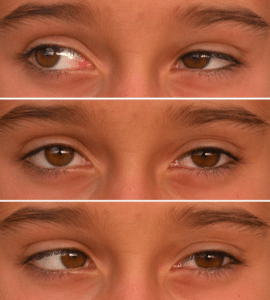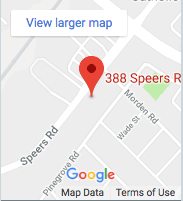Very few people can see perfectly and most of us will experience at least one vision problem at some time during our lifetime. That’s because eyes are incredibly complex, so even the slightest disorder in the lens, cornea, retina or iris can significantly change our eyesight.
Many vision problems can be corrected with the correct prescription for glasses or contact lenses. Listed below are some of the common vision problems that can be corrected. If you are experiencing any of these problems, make an appointment with an eye doctor right away.
Treatable With Glasses or Contacts
The following eye conditions can usually be treated with glasses or contact lenses:
Presbyopia is an age-related problem caused by a hardening of the eye’s lens that decreases the eye’s ability to focus on objects close up. It’s a completely normal part of aging that happens somewhere between the ages of 38 and 42.
Myopia is commonly called “nearsightedness.” This vision problem is the opposite of presbyopia, that is, you can see objects clearly close up, but faraway objects are unclear.
Astigmatism is a visual impairment that’s the result of an irregular curvature in the eye. Instead of the eye being shaped like a basketball, it’s shaped more like a football. This affects the way the eye processes light and results in different degrees of blurred vision.
Hyperopia is also known as “farsightedness” and is a vision problem that results in seeing faraway objects clearly and nearby objects poorly. The difference between hyperopia and presbyopia is presbyopia is due to age-related changes and hyperopia many be caused by genetics, disease or trauma and can occur at any age.
May Need Additional Treatment
The following eye conditions may need treatment beyond wearing eyeglasses or contacts.
Amblyopia is commonly known as “lazy eye” and is an early childhood condition where the child’s eyesight does not develop as it should in one eye. It occurs when the child’s brain favors one eye, often due to poor vision in the other eye. Sometimes, amblyopia can affect both eyes.
Strabismus is commonly known as “crossed eyes.” Crossed eyes happens when the muscles surrounding the eye don’t work well together, resulting in each eye looking in different directions simultaneously and sending two different images to the brain.
Color Deficiency or colour-blindness is an inability to discern certain colours. Confusing red and green is the most common type.
Nyctalopia, or night blindness, is the inability to see well in poorly lit areas. People with night blindness often have difficulty when driving at night. Night blindness is a symptom of other eye problems such as cataracts or nearsightedness and not an actually a disorder in itself.
Photophobia is sensitivity to light. People with light sensitivity often experience headaches and eye strain when exposed to direct or bright light. Photophobia is similar to night blindness in that it’s a symptom of an underlying condition like inflammation of the eyes.


